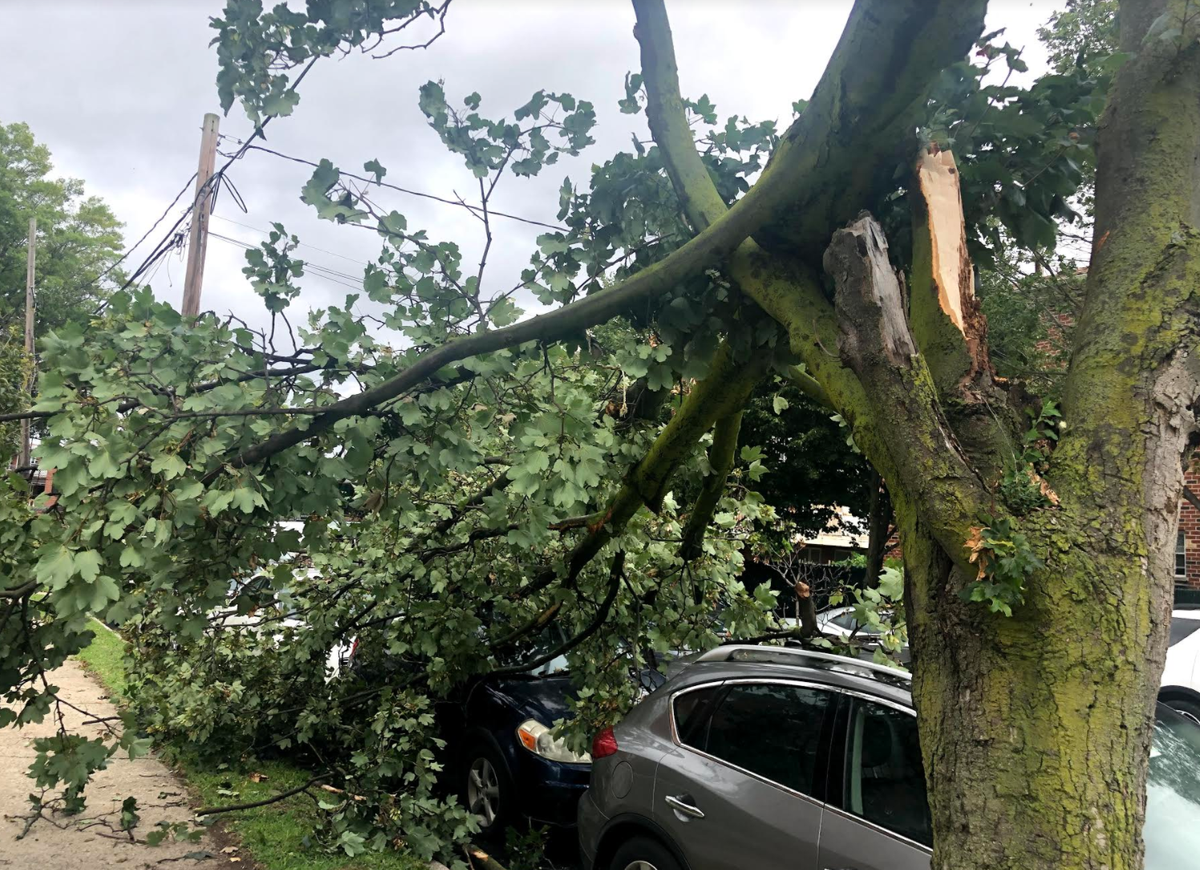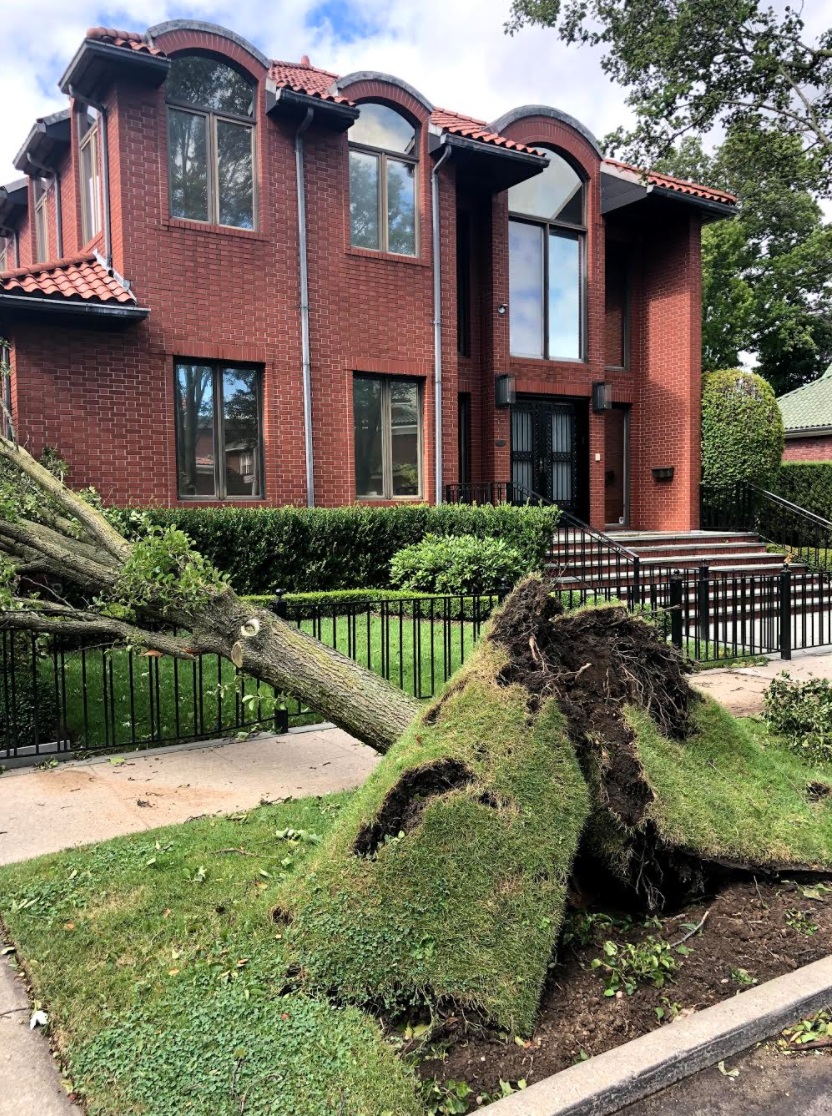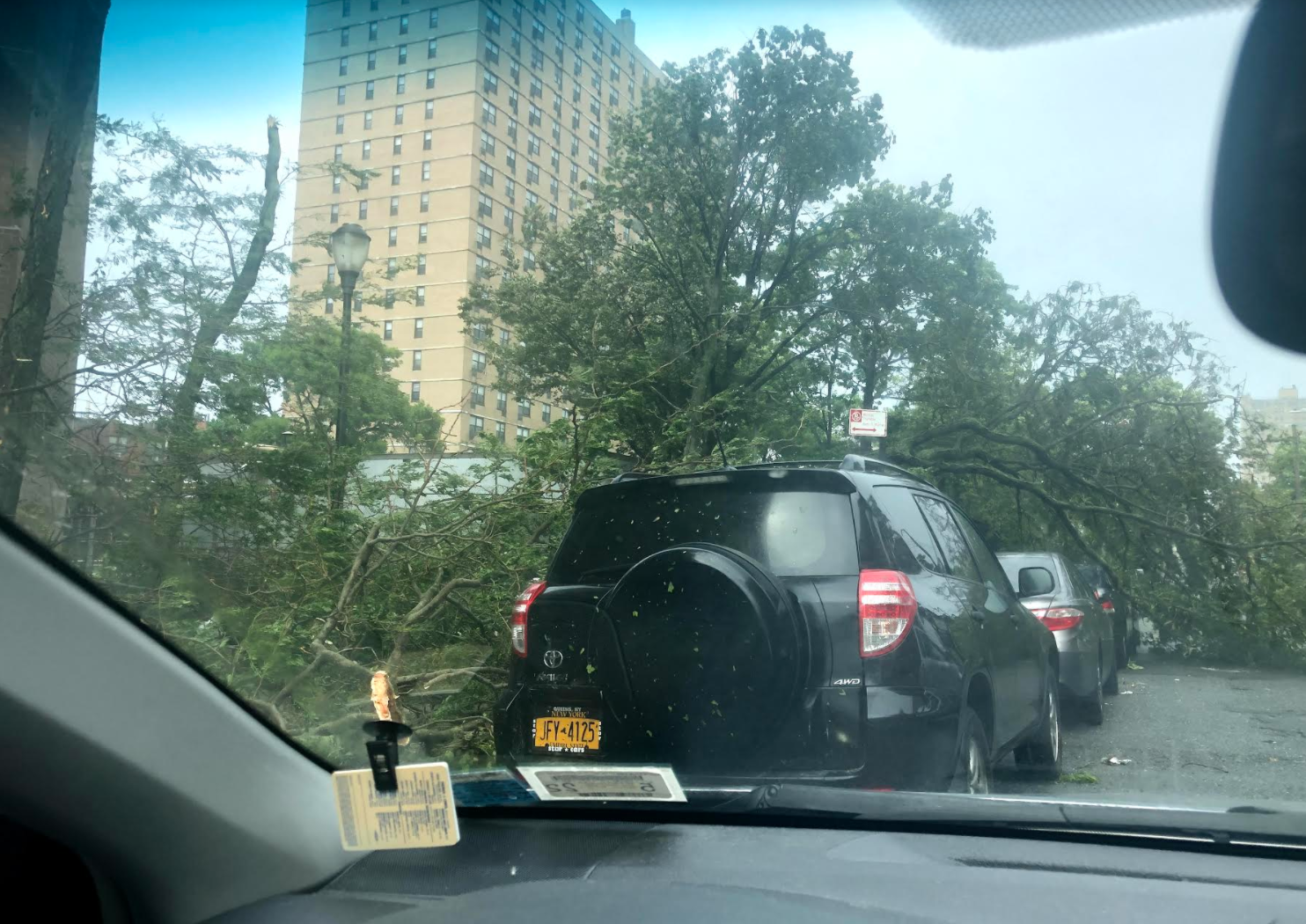Was Brooklyn Prepared For Tropical Storm Isaias?


SOUTHERN BROOKLYN – Tropical Storm Isaias left about 22,000 Brooklyn households without power last night. The number is now down to 5,632. In Manhattan this morning? The number is 67.
Fallen trees have taken over the streets. There were about 21,000 fallen trees across the city, NYC Parks told us, with 6,000 in Brooklyn. Some fell on USPS trucks. Others, on top of cars. One injured a person in Brooklyn, Mayor Bill de Blasio announced. 911 was also very slow and kept people on hold because of the large number of calls.
“During the storm, we saw a breakdown in the 911 and 311 call systems, with callers unable to get through to report urgent or emergency situations,” Council Member Chaim Deutsch told Bklyner. “I will be participating in a City Council oversight hearing in regards to these call volume issues. Thank G-d the loss of life yesterday was minimal – but next time we may not be as lucky.”
According to Con Edison, thousands of customers in Brooklyn, Queen, Staten Island, and the Bronx are still without power, hours later. Southern Brooklyn elected officials have had enough.
“We are actively managing more than 21,000 incoming tree-related service requests due to Tropical Storm Isaias,” Anessa Hodgson, the press officer at NYC Parks told Bklyner. “Inspections and work to clear fallen trees and branches are in progress. Emergencies and impassable streets are prioritized. As this was a major storm, the work required for full city clearance will take some time.”
Council Member Mark Treyger recalled a conversation he had with Con Edison officials before the pandemic. He was told, “Even if a squirrel, and I’m not exaggerating, even if a squirrel climbs up the powerline, thousands of houses can lose power. Even if a graduation balloon grazes the wire, people will lose power. I mean, are you kidding me? My constituents deserve a 21st-century energy system that does not collapse by squirrels climbing poles.”
“It’s important to note that some areas that were affected are not strangers to power outages,” Treyger told Bklyner. “Even on days when we don’t have tropical storms, we experience outages when there are even slight interruptions on overhead powerlines.”
The southern parts of Brooklyn rely on overhead powerlines, which makes it more susceptible to outages, compared to Manhattan and northern Brooklyn where they rely instead on underground powerlines. Treyger believes this needs to change.
“One of the questions we are asking is, can we use federal resiliency money to talk about building an underground network to fortify the system?” he asked. “Climate change is real. Its impacts are being felt. The solution is that we need federal help immediately. The cost of doing this is not cheap and I’m under no illusion that this is cheap work. If we’re going to be serious about resiliency and the ability to keep our residents safe and supported, we need to modernize the energy grid and system.”
Monica Tabussum is a long-time resident of Bath Beach. She said she counted six fallen trees on her walk this morning. As the storm was picking up outside, she said she remembers it feeling like it was Hurricane Sandy all over again.
“I lost power all of last night. It thankfully came back this morning, so I am one of the lucky ones,” she told Bklyner. “But we are not prepared. Not at all. I don’t care what the Mayor says; tell him to come down to Southern Brooklyn. More needs to be done. Me and my neighbors cannot go through another Sandy again.”

He noted that last year when Manhattan’s 73,000 households were without power for five hours, it was national news. So why not the same effort for the outer boroughs? Why not the same effort for Brooklyn where thousands of people are still without power a day later in a pandemic?
“Where is the crisis response to the fact that a quarter of million houses are out of power in a pandemic?” he asked. “This is not acceptable. We need to get the power restored and find out what is the federal government’s plan of action to assist NYC to deal with its growing energy demands and resiliency challenges.”
It’s a clash between the Mayor and local officials. We wrote about it last year when we asked the Mayor’s office if the city was resilient after Hurricane Sandy. At the time, Jainey Bavishi, the Director of the Mayor’s Office of Resiliency, told us that it was more resilient than ever. But local elected officials disagreed. And they disagree now. We’re nearing eight years since Hurricane Sandy, and a tropical storm still has the ability to leave thousands of residents without power, and thousands of trees smashed on top of cars.
“Isaias has underscored just how little progress has been made since Sandy. The Mayor was focused on lower Manhattan but the bulk of the damage was in Brooklyn, Queens, Staten Island, and the Bronx,” State Senator Andrew Gounardes told Bklyner. “Tens of thousands of people in Brooklyn lost power and while many had it restored, we still have thousands of people in southern Brooklyn without power. I personally went out to survey the damage and saw many, many dangerous downed trees in our area. Our communities deserve the same level of planning and focus as Manhattan does – and we need resilience plans and actions to prepare us for the storms to come.”

Congress Member Max Rose believes that the most important part of crisis management is having a plan beforehand with resources behind it, as well as clear communication throughout. But when it came to this storm, he believes that the Mayor had neither.
“Even worse, Con-Ed has been non-responsive to our pleas for assistance,” he told Bklyner. “I’ve had so many constituents tell me they’ve been calling the city about dying or rotting trees for years, only to be ignored until yesterday when those trees ripped down power lines. That’s negligence, plain and simple. Because when the power goes out, it’s not just an inconvenience, for far too many with medical conditions it’s a matter of life and death.”
In his press conference this morning, Mayor de Blasio said, “A lot of work is going to be done today, first to clear streets to secure the situation, make sure there’s no danger, and then to keep restoring power. I talked to the president of Con Ed last night, they’re doing that work now, but job one is to make sure there’s no additional danger to human life and to make sure that cleanup is done safely and quickly. Overall, as big an event as it was we did see less flooding than expected. That’s a very good thing, and our City agencies were out there from the beginning preparing to minimize the damage.”
Council Member Justin Brannan has been Tweeting his anger and frustration all throughout the storm. His office has also been working to manage the thousands of residents in his district who are still without power. According to Brannan, this was a disaster that the city, more specifically Mayor de Blasio, should have seen coming. He said he and others have been sounding the alarms that the outer boroughs are not properly prepared for extreme weather. But no one is listening, he said.
“All the Mayor cared about yesterday was protecting South Street Seaport from floods that never happened. To call this a misread was an understatement,” Brannan told Bklyner. “While we are too busy right now trying to restore power and clear trees that are blocking entire streets, as soon as this is over we will be holding the City and ConEd to account – we need to seriously start discussing burying our old overhead power lines, fully funding the Parks Department so that tree care can actually be completed in a timely manner prior to a storm, and exploring the possibility of public ownership and control of our energy grid.”
“The status quo is just not working – yesterday made that crystal clear yet again,” he continued. “We can either learn from these mistakes or we can continue to suffer from them. People are fed up and rightfully so.”
To report a downed tree, call 311.




